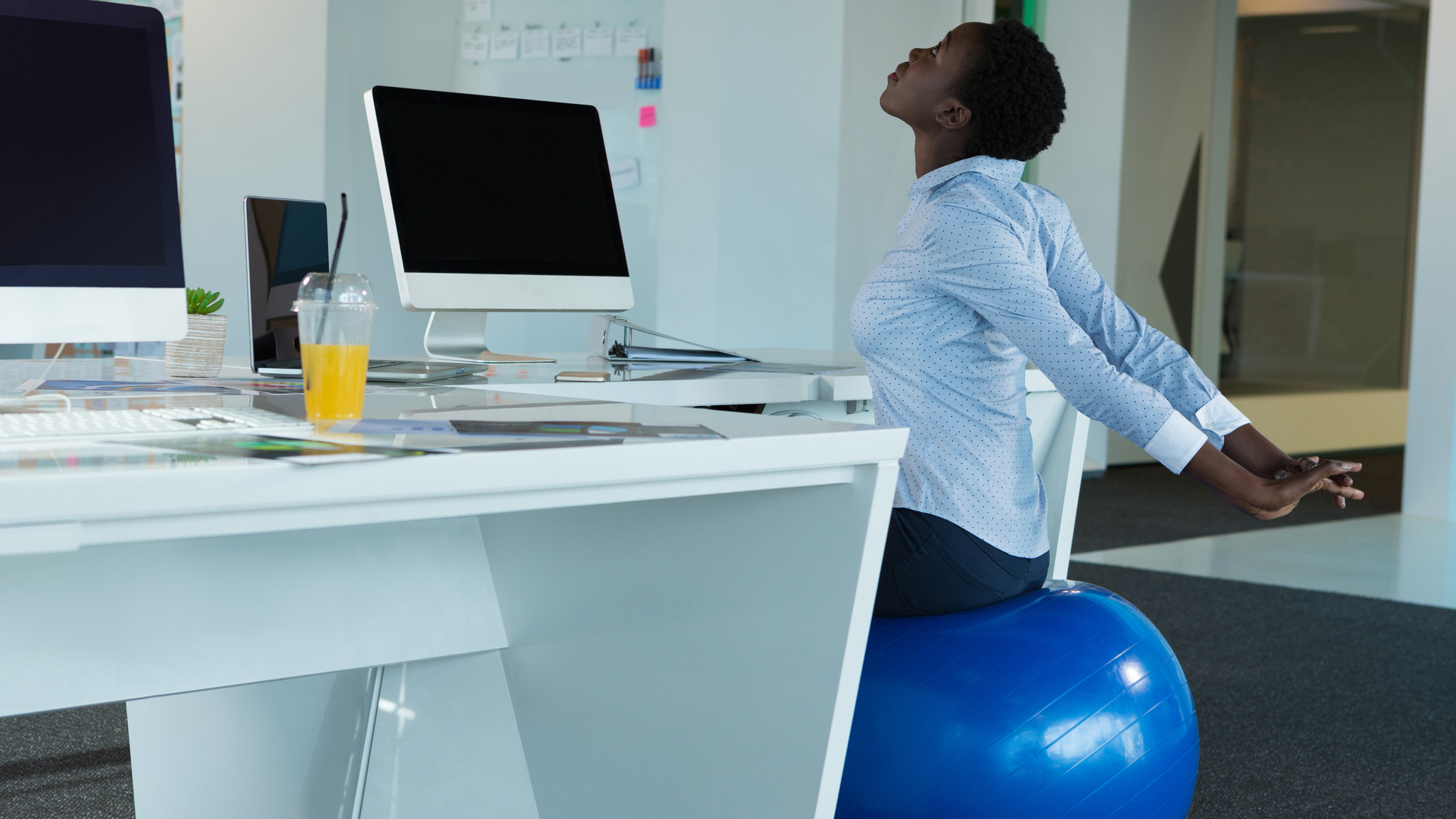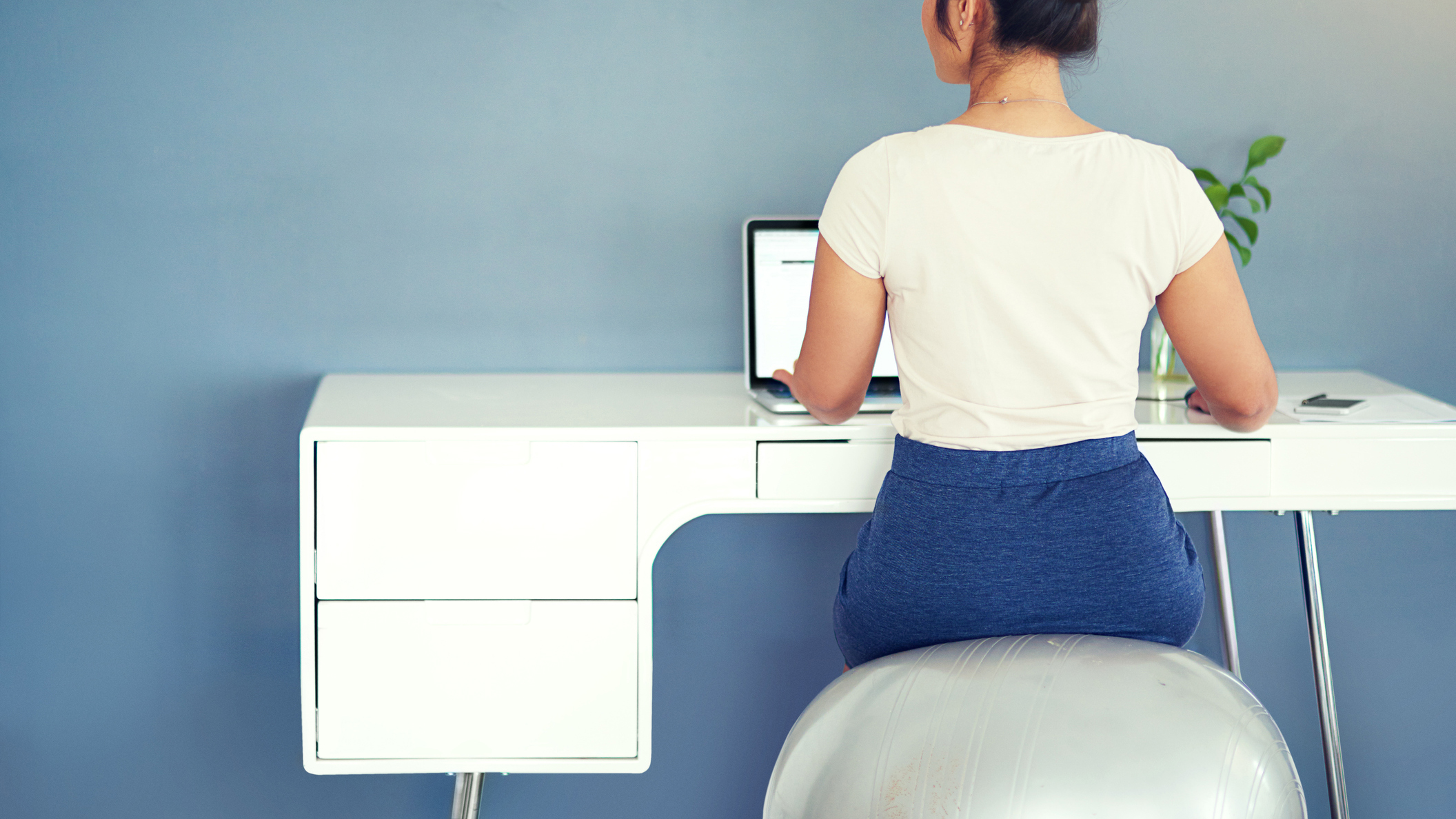Swiss ball: Does sitting on a stability ball instead of an office chair tone your core?
Is there any benefit from ditching the office chair in favour of a Swiss ball or yoga ball? Science weighs in


Before COVID, it was becoming increasingly commonplace to see people in the office gently bouncing on Swiss balls, or stability balls, while sitting at their desks. Although there are plenty of effective, ergonomic options in our best office chair guide, Swiss balls are said to engage your core, forcing you to keep yourself stable to tone up while you work.
Now many office workers have pivoted to working from home, some people have shirked the idea of investing in an office chair in favour of the much cheaper, and potentially healthier, Swiss ball. But is there any truth in the idea that they're healthier than an office chair?
One review, conducted by researchers at the National Institute for Occupational Safety and Health in Cincinnati, sought to find out. Looking at all the existing research into the topic, the researchers found minimal evidence that using exercise balls, or other methods of unstable seating, resulted in greater "trunk" activation (that's your abs and lower back, like a tree trunk) throughout the day. Of seven studies, only two found any muscle activation at all, and it was rather minimal.
The other argument, that we burn calories because of the effort of keeping the ball steady throughout the day, was also disproved. According to the review, we only burn an extra four calories an hour on the ball than we would just sitting on an office chair.

Swiss balls are great pieces of exercise equipment, as you can see in our guide on how to use a Swiss ball. The instability can force us to work muscles we never knew we had, while the novelty of switching up our workouts with a relatively inexpensive piece of kit is absolutely vital, especially in lockdown. However, as chairs, the research shows absolutely minimal benefits at best.
A good office environment starts with a good chair. It needs to provide excellent lumbar, or lower-back support, have a five-star base and adjustable height, so you can correctly line you screen up at eye level. The Swiss ball, at a single height, unfortunately cannot provide this.
The other big factor here is light. Great lighting (ideally, as much natural light as possible) is required for a good office environment, but unfortunately, working from home can make this impractical, depending where we're forced to place our home office. The best SAD lamps can provide light which actually contributes to our vitamin D levels, mimicking actual sunlight.
Start your week with achievable workout ideas, health tips and wellbeing advice in your inbox.
Matt Evans is an experienced health and fitness journalist and is currently Fitness and Wellbeing Editor at TechRadar, covering all things exercise and nutrition on Fit&Well's tech-focused sister site. Matt originally discovered exercise through martial arts: he holds a black belt in Karate and remains a keen runner, gym-goer, and infrequent yogi. His top fitness tip? Stretch.
